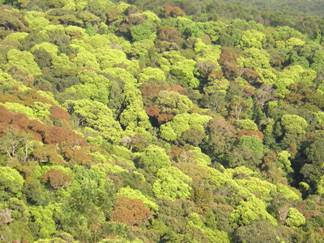
|
|
| Home | About Forestry | Eco-Tourism | Forestry Addresses | FAQs | Contact Us | |
|
| Forestry Technologies | |
FORESTRY AN OVERVIEWIMPORTANCE OF TREES A great emphasis is placed on trees in this Web module. This emphasis on trees reflects their ecological, biological, and cultural importance. Also, trees are critical to the classification of forests. Trees represent some of the oldest living organisms on the planet. For example, bristlecone pines, sequoias, and cypress are all long-lived species of trees. Trees were instrumental in the development and support of civilizations. They form important links in the earth's geological, chemical, and hydrological cycles by:
|
|
| Home | About Forestry | Eco-Tourism | Forestry Addresses | FAQs |Disclaimer | Contact Us | |
|
| © All Rights Reserved. TNAU-2016. |
|
